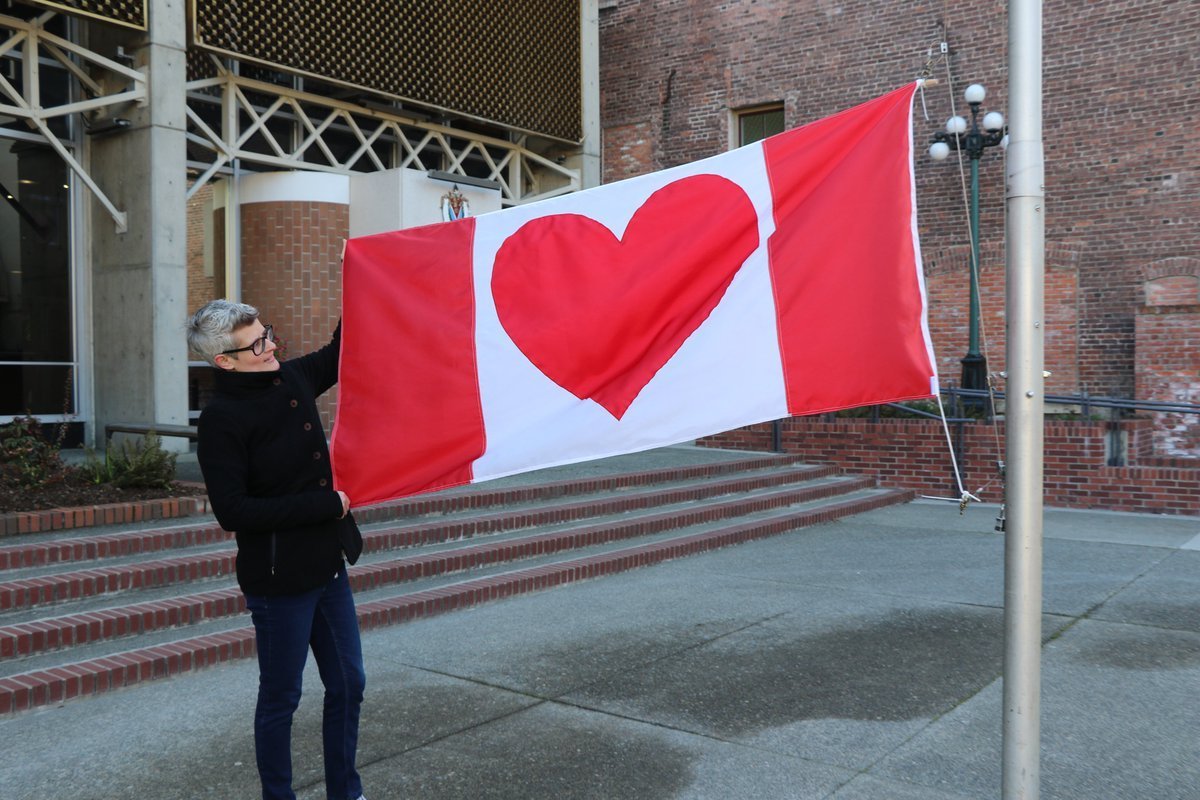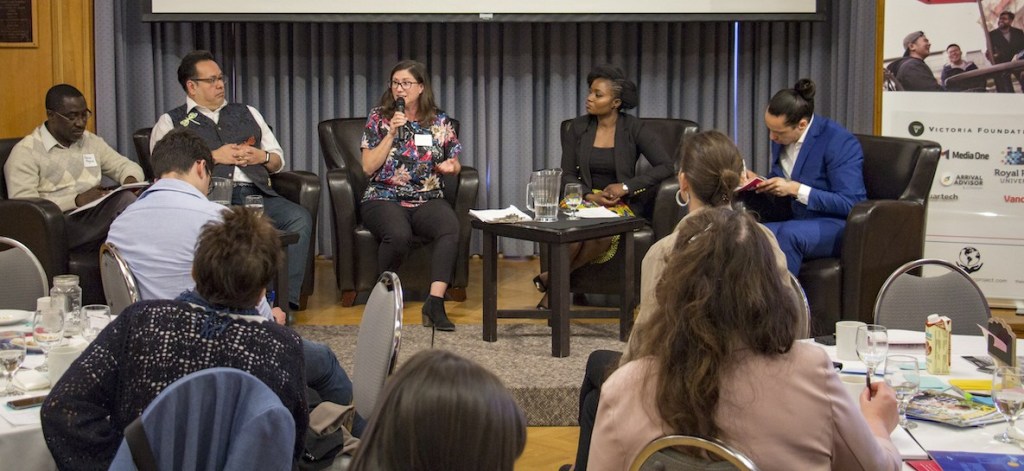The Inclusion Project – Canada’s Inclusive Future And Newcomer Engagement Part 1: Why Now, And Reconciliation

Last Saturday I was honoured to attend and also to provide the keynote address at an important community-led event called The Inclusion Project. Created by recent newcomer from Nigeria, Ruth Mojeed, with the support a small organizing committee, the event was an opportunity for participants to dialogue and grapple with the difficult questions of diversity, equity and inclusion. Follow up steps from the inaugural event include developing a charter on diversity, equity and inclusion for stakeholders across sectors. Stay tuned here. This blog post and next week’s as well, is a written version of my address. You can watch the full video of my talk here.
Why is The Inclusion Project important?
We pat ourselves on the back in Canada and in our region for being inclusive, tolerant and welcoming. Indeed compared to some places in the world this is the case. But it’s also the case that despite how progressive we think we are there is still racism and discrimination in this country and in this region. While this maybe be hard to hear, it’s important to say, and it’s important for me as a community leader to say.
I know there is still racism and discrimination in our region because of my experience during Ramadan last year. Each year we have Rabbi Kaplan come to City Hall and light the menorah for Hanukkah. We invite the media as well as councillors and senior staff and treat it like a formal protocol event. Since the Quebec mosque shooting, I have developed a closer relationship with the Imam and the Muslim community and it occurred to me that we might want to have a protocol event around Ramadan in the same way we had for Hanukkah.
Near the beginning of Ramadan last year we hosted the Imam, councillors and the media in my office. But we took it one step further. In order to build solidarity, empathy and mutual understanding, Council committed to fasting with the Muslim community during one day of Ramadan and we invited the community to fast with us. At the end of our day of fasting we co-hosted – with the Imam and members of the Muslim community – an iftar or fast-breaking dinner at City Hall so we could eat together and learn from each other.
I won’t repeat here some of the racist backlash that occurred because I won’t use this platform to amplify hate speech even while condemning it. But there were some surprising and vitriolic emails that came my way as a result of this invitation and event. Because there is still racism in our country and in our region.
But there’s another reason that The Inclusion Project is important. And that’s because while there are still racist attitudes and hate crimes, people are also yearning for connection, belonging, and a way to show empathy and solidarity. After the Quebec Mosque shootings in 2017 we organized a vigil on the steps of City Hall. Despite very short notice, there were thousands of people in attendance – so many people that the street was spontaneously closed and the sound system was far too small for the gathering. No one had anticipated such a crowd.
The Inclusion Project is also important now because our region is changing. Between 2011 and 2016 there was a 38% increase in racialized minorities. This is a tremendous opportunity in many ways, including economically. Integration of newcomers to Canada into our community through economic inclusion not only enhances a sense of connection and belonging and makes us a more diverse and resilient community. But also, a report from the 2017 Victoria Forum notes that “though there are barriers to achieving these goals, it was found that a one per cent increase in ethno-cultural workplace diversity led to one per cent increase in productivity and 2.4 per cent increase in revenue.”[1]
There are lots of reasons for The Inclusion Project now.
***
In order to build Canada’s inclusive future and to move The Inclusion Project forward, we must begin with reconciliation. If we do not treat Indigenous people and their lands and nations with respect and if we don’t honour their fundamental rights, how can racialized people from around the world who make Canada their home believe that there is hope of true inclusivity? We cannot have inclusivity, belonging, and empowerment if we do not work towards reconciliation.
Reconciliation must be Indigenous-informed and respect Indigenous practices, world-views and ways of knowing. Reconciliation is not a goal, it is a process and a path that we walk together.
In 2017 the City of Victoria began a formal process of reconciliation with the Songhees and Esquimalt Nations, the Lekwungen speaking peoples on whose homeland the City was founded. When the City first approached the Nations, it was in a very colonial way, asking them to sit on a “reconciliation task force.” Through conversation we learned that a more Indigenous-focused approach would be a better way to proceed if we were sincere in wanting to pursue truth and reconciliation. In response, we formed a City Family and began a Witness Reconciliation Program.
As part of this process, decision making with regards to reconciliation (other than budgetary allocations) are made by the City Family with the Songhees and Esquimalt Chief and Councils as witnesses. Witnesses, in Lekwungen tradition, listen to the story of the family and give their input and guidance to find a good way forward.
After a year of discussion, deliberation, truth-sharing, and seeking counsel from the Songhees and Esquimalt Chiefs and Councils on multiple occasions, the family decided that the first important step in taking action on reconciliation was to remove the statue of Sir John A. Macdonald from the front doors of city hall so that the family members and other Indigenous people do not need to walk past this painful reminder of colonial violence each time they enter the doors of their municipal government.
Around the region and across the country one of the main reactions when we moved the statue was, “There was no consultation!” This reaction emphasizes the need for further work on understanding and reconciliation; it revealed the prevalence of colonial thinking, discrimination and the continued invisiblization of Indigeneous people in our region and country. A year of consultation with Indigenous people didn’t count as consultation.
Dr. Pamela D. Palmater is a Mi’kmaw citizen and a member of the Eel River Bar First Nation in northern New Brunswick and Chair in Indigenous Governance at Ryerson University said in a panel I attended recently, “If what you’re doing feels easy it is not reconciliation.”
Moving forward locally this year we will convene the Victoria Reconciliation Dialogues. In order to have an inclusive future we must grapple with what it means to literally inhabit someone else’s homelands.
At a national level the work of reconciliation is also important if we are serious as a country about creating an inclusive future. In February 2018 the Prime Minister said in the House of Commons:
“Instead of outright recognizing and affirming Indigenous rights – as we promised we would – Indigenous Peoples were forced to prove, time and time again, through costly and drawn-out court challenges, that their rights existed, must be recognized and implemented. Indigenous Peoples, like all Canadians, know this must change.”
The government is in the process of undertaking consultation that will result in legislation outlining the relationship between Canada and Indigenous Nations. In September 2018, the government published a preliminary draft report on work to date in and a proposed outline of legislation.
In a response paper, the Assembly of First Nations outlined its concerns with the government’s approach. The top two concerns are:
The government is proposing that First Nations apply to the federal government for recognition as a nation and the government will decide whether to accept that application to then advance negotiations. Such an approach is not consistent with self-determination when one government sets the criteria for recognition and then makes the determination for another.
Recognition is premised on Crown recognition rather than affirmation of Indigenous Peoples pre-existing, inherent legal rights.
The approach proposed by the government will not lead us on a path to an inclusive Canada. It also does not demonstrate to newcomers to our country that we take rights seriously, that we are truly a welcoming society.
Next week’s post: The Inclusion Project – Canada’s Inclusive Future and Newcomer Engagement Part 2: Covenant, and Side By Side.
[1] Bessma Momani, Mark Tschirgi and Adel Guitouni, “Diversity and Economic Prosperity,” in Canada@150: Promoting Diversity & Inclusion: Report of the Inaugural Victoria Forum, ed. Adel Guitouni, Saul Klein, Sébastien Beaulieu, (Victoria: University of Victoria, 2018), 24.
